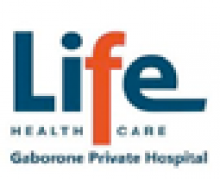Introduction
Medication expenditure contributes quite significantly to the overall costs of health insurance industry in Botswana. Over the years the cost of medicines has spiralled out of control and the increase has often been well above the inflation rate. This high cost of medicine is in the long term non sustainable and if left unchecked could cripple the medical aids in Botswana. This is particularly so, bearing in mind that monthly premiums are extremely low compared with other countries. Increasing monthly premiums is not a viable option either as it may lead to many people stopping subscribing to medical aid Schemes.
It was against this background that the two medical aid Schemes administered by Associated Fund Administrators (AFA) namely Botswana Public Officers’ Medical Aid Scheme (BPOMAS) and PULA Medical Aid Scheme took a strategic decision to introduce Pharmaceutical Benefit Management (PBM) System. The main objective of PBM system is to reduce the cost of medicines and to ensure long term sustainability of the healthcare insurance. This system was introduced in January 2009 after consultation with various stakeholders over a period of time.
Pharmaceutical Benefit System
PBM system is a component of Managed Care which specifically addresses issues around the cost and utilization of medication. PBM aims at optimizing the utilization of medicines but ensuring that quality of care is not compromised. It is a tool used to optimize the utilization of medicines within the healthcare industry. PBM involves coming up with a number of interventions that optimize the use of pharmaceuticals thus ensuring that health insurance can be sustained over a long period of time.
The two major interventions that have been introduced for BPOMAS and PULA include Generic Reference Pricing and Differential Mark Up. Through Generic Price Referencing all branded products that have generic equivalents registered in Botswana are reimbursed at the aggregate or average price of generic equivalents. Differential mark up on branded and patented medicines involves reimbursing more favourably for generic products as compared with branded products. Currently generic products are reimbursed up to 57% mark up of the basic acquisition price whereas branded products are reimbursed at 35% mark up of the cost price.
It must be noted that the use of generic medicines does not imply compromising the quality of care. A deliberate decision was taken that only generics that have been registered in Botswana are reimbursed through the PBM system. Registration through Ministry of Health means that the efficacy and safety of these products has been extensively evaluated and to all intends and purposes match their branded counterparts. Furthermore, the active ingredient in the branded product is exactly the same in the generics hence the assurance that care is not compromised in any way. In this regard the clients of the two medical aid Schemes can be assured that only quality medicines are reimbursed through this system.
The differential mark up, on the hand, is premised on the fact that the same chemical entity is used in both branded and generic medicines. In the case of branded products the healthcare industry is merely paying a premium for a name. Payment of this premium does not make economic sense especially in the settings of limited resources in a developing country like Botswana. The idea is to encourage doctors and pharmacists to increasingly prescribe and dispense generic medicines in order to drive the overall expenditure of medication down.
Through PBM prices are monitored on a continuous basis and adjustments effected accordingly to ensure service providers are reimbursed appropriately. The system is also very flexible such that reimbursement prices can be adjusted at any time to ensure that suppliers are not adversely affected by fluctuations of prices in the market.
Other PBM interventions include profiling of service providers, negotiating acquisition prices with drug manufacturers, as well as regular publishing of price list. These are additional tools that also ensure that stakeholders involved in the pharmaceutical industry play their part in driving the cost of medicines down.
Conclusion
The implementation of PBM has generally been successful over the past 12 months despite a few challenges. Expenditure of medicines during this period has gone down and both Schemes have realized some savings. Patient acceptance has been rather mixed mainly due to lack of understanding on their part. Some patients believe that generics are inferior to branded products and convincing them otherwise has been somewhat difficult. However, more people are beginning appreciate the concept and are happy to use generic medicines. Most service providers have accepted the PBM system as means to long term sustainability of the medical aid Schemes. It is in the best interest of everyone involved in the healthcare industry that medical aids Schemes survive for a long time to come.
By Lesedi Keetile









